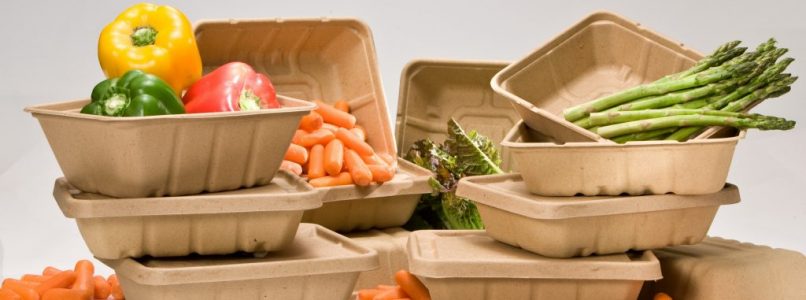From the technological and recyclable boxes of The Box to the new natural and biodegradable frontiers of food packaging: let's take a look at the possible packaging of the future
In a period in which the issue of home delivery and online shopping is on the agenda and of vital importance, it may be interesting to take a look at the possible future scenario regarding packaging and food packaging. While due to recent changes, the focus is mainly on deliveries of local products, food & beverage and basic necessities, the world continues to study increasingly practical, innovative, ecological and biodegradable solutions for cartons and packaging of various type. In the global perspective of reduce air pollution and the use of plastic, let's find out what's new in the present and the future, both on the shipping front and on that of the storage and packaging of food products.
The box: the eco-box that lasts 1000 shipments
From an idea of French startup Living Packets a new one was born ecological and technological box designed primarily as packaging of the future for e-commerce sites and giants such as Amazon or Ebay. This product, simply called The Box, not only can be used over a thousand times, but it is made almost exclusively with recycled materials, including special belts that protect the contents and which would replace the classic shock-absorbing and polluting packaging. The box is then equipped with technological equipment equipped with sensors, realtime tracking, GPS system and connectivity, which thanks to the connection to an app not only allows you to monitor the shipment, but also to reset its parameters if you wish to reuse it. Finally, it is also equipped with sensors that allow you to evaluate whether the conditions of transport are adequate, and a mini video camera that will determine if the package was opened before the recipient received it. Available in two formats, 1 liter and 25 liters, the revolutionary ecological and resistant box is expected to enter the market by the end of 2020, and the expected cost of its shipment is only 2 euros.
In short, if the giants of the global shipping market were to adopt a similar system, it could be significantly limit the environmental impact. All that remains is to wait and see.
Plastic-free packaging: towards a greener future
The question arises spontaneously, but if the contents of futuristic and recyclable packaging for shipments in Italy and in the world were to be foodstuffs, how can we be sure that these too will not impact the environment? In this sense, in recent years, the food packaging has made great strides and many are the food brands, both Italian and foreign, that have introduced ecological and plastic-free packaging. These include frozen foods sold in cellulose or bioplastic packs, drinks in bottles or biodegradable or Tetrapak cans or already washed salads packed in natural and compostable bags. In Italy, the response to food with ecological packaging has been positive, so much so that in 2019 there was an increase in turnover of 24.5%.
In the last year, in addition to these great steps forward by companies and consumers in the food packaging sector, we have witnessed important changes also on the front of wrappers, bags and ecological food films as alternatives to plastic, with new proposals developed by companies and start-ups from all over the world. In 2019, for example, the American start-up Apeelsciences launched a new revolutionary spray coating which is able to better preserve food and which is already recording excellent sales in the USA and in some European countries.
In Indonesia the start-up Evoware stood out for the creation of packaging made with algae, from films for hamburgers, to sachets for instant coffee up to flavored edible containers.
A Swedish design studio called Tomorrow Machine worked on a beautiful and biodegradable food packaging line, nicknamed This Too Shall Pass, which includes algae bags to freeze liquids from the same duration of its contents, packages made with colored beeswax to store rice and pasta and oil bottles made with caramelized sugar and wax which open like an egg, then suitable for compost.
In short, now that the unwanted consequences of plastic are becoming more visible, we cannot but hope that more and more food companies, start-ups and consumers will join forces to adopt low environmental impact shipping and packaging solutions.
Photo: ecological food packaging, Baamboozle.jpg


